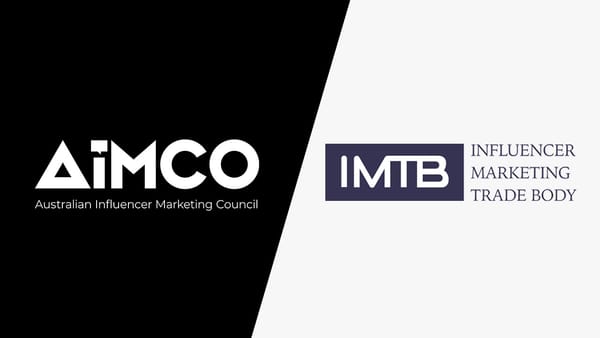We’ve all laughed at bad ‘influencer marketing’. Heck, we’ve all been responsible for it.
Influencer marketing that didn’t engage the desired audience (or any audience); influencer marketing that didn’t align with the brand; influencer marketing that was clearly staged (remember that Listerine ad?); influencer marketing that lacked creativity; and influencer marketing that did absolutely nothing to support the brand’s objectives.
Brands have been burnt, that’s obvious. But it’s not enough to simply say, we’re going to do better. We need to start showing what we’re doing to be better.
Our industry will only be respected (and successful) if we rebuild the agency-client model and put transparency at the core. The good news is that it’s starting to happen thanks to leaders like Adesuwa Ajayi, Founder of Influencer Pay Gap. But we still have a long way to go.
It’s time the industry grew up.
We’re saying goodbye to the fluffy reputation, goodbye to secretive margins and data points, and we’re entering a new era. An era of influencer marketing that thinks strategically – not tactically, an era that integrates performance and brand to rightfully become a performance channel. That is grown-up influencer marketing.
The customer comes first
Influencer-first agencies tend to think tactfully. To be honest, I think everyone got caught up trying to outdo each other with the biggest, shiniest event (probably at Soho Farmhouse).
To drive success, we need to work with strategists, data scientists and insights specialists to form a customer-first approach – analysing who we think they are (and whether they’re who we should be focusing on), where customers spend time, their purchasing and consumption habits and the type of content that appeals to them.
I recently spoke to the founder of a lubricant company who, through audience research found that people in retirement homes were the most sexually active. Without that research, they would be missing out on huge sums of potential revenue.
Integrate, integrate, integrate
To drive efficiencies across your business, not just on a departmental level, influencer marketing needs to be baked into your marketing strategy.
Many influencer marketing agencies lack the experience of working with PR and paid media teams but it’s vital that all these teams work in unison – and stop the battle for budget.
A typical agency process following the briefing and content approval will look something like this:
- Influencers create content.
- Content goes live and their audience engages with it.
Most stop here because they aren’t thinking about how to maximise your spend – or they don’t have access to other teams.
What should you do next?
- Monitor content to understand what is truly driving performance for your brand. No more defining creative through broad assumptions.
- Next, you should be collaborating with paid social, PR teams and brand teams to amplify the content further to maximise its power. You’ve invested money in content, don’t just leave it on your drive.
- Then, you should be integrating influencer content on your website, newsletters and in-store. Don’t forget that consumers trust influencer content more than brand content, so the more places this is showcased, the more ROI you’ll drive.
- Last but not least, pull an integrated report to understand not just how the content performed on their channels, but also what style of content performed best through the paid and PR elements. Dig deep into the relevancy of engagements to the content and learn from it.
As an example, we ran a relevancy sentiment analysis through the natural language understanding tool, Salient, for a bed brand and quickly learned that the audience loved the beds with the USB portals built in. This insight gave the team an idea on which to build the next activation.
Respect influencer marketing
Remember when adverts were inspirational, aspirational, and funny? Has anyone else realised that influencer content has started to lack creativity? This isn’t the influencer’s fault – it’s likely the direction and the brief they’re receiving. If I see a lacklustre ad from an influencer, I tune out.
Can you imagine an advert airing on TV after a measly 30-minute brainstorm? We need to treat the influencer marketing process with the same respect we do any other marketing channel and put our customers’ needs at the heart of it – not just what looks good on a grid post.
We know people are desperate to be entertained. So, what are we waiting for?
Time to experiment
How many KPIs have you smashed without testing? A few, maybe? If that’s good enough, you can skip to the end of the article. The truth is, most agencies have no idea what will actually land. This is why experimentation is key to the long-term success of your influencer marketing strategy.
When investing in more traditional forms of marketing, brands invest in things like research stages and focus groups, yet few include an experimenting phase when building influencer strategies.
Yes, testing requires a budget but if you bypass this phase, you risk wasting 100% of your budget and that will most likely make it very tricky to get future investments signed off.
Stop being shady
How can a client understand if a project has driven ROI if they don’t know how much they truly spent on the influencer marketing activity, and how much went to the agency?
Similarly, measurement needs to be more than a quarterly check-in. We should be analysing the data and acting on it as soon as possible to ensure success.
The whole agency/brand model needs to be transparent.








